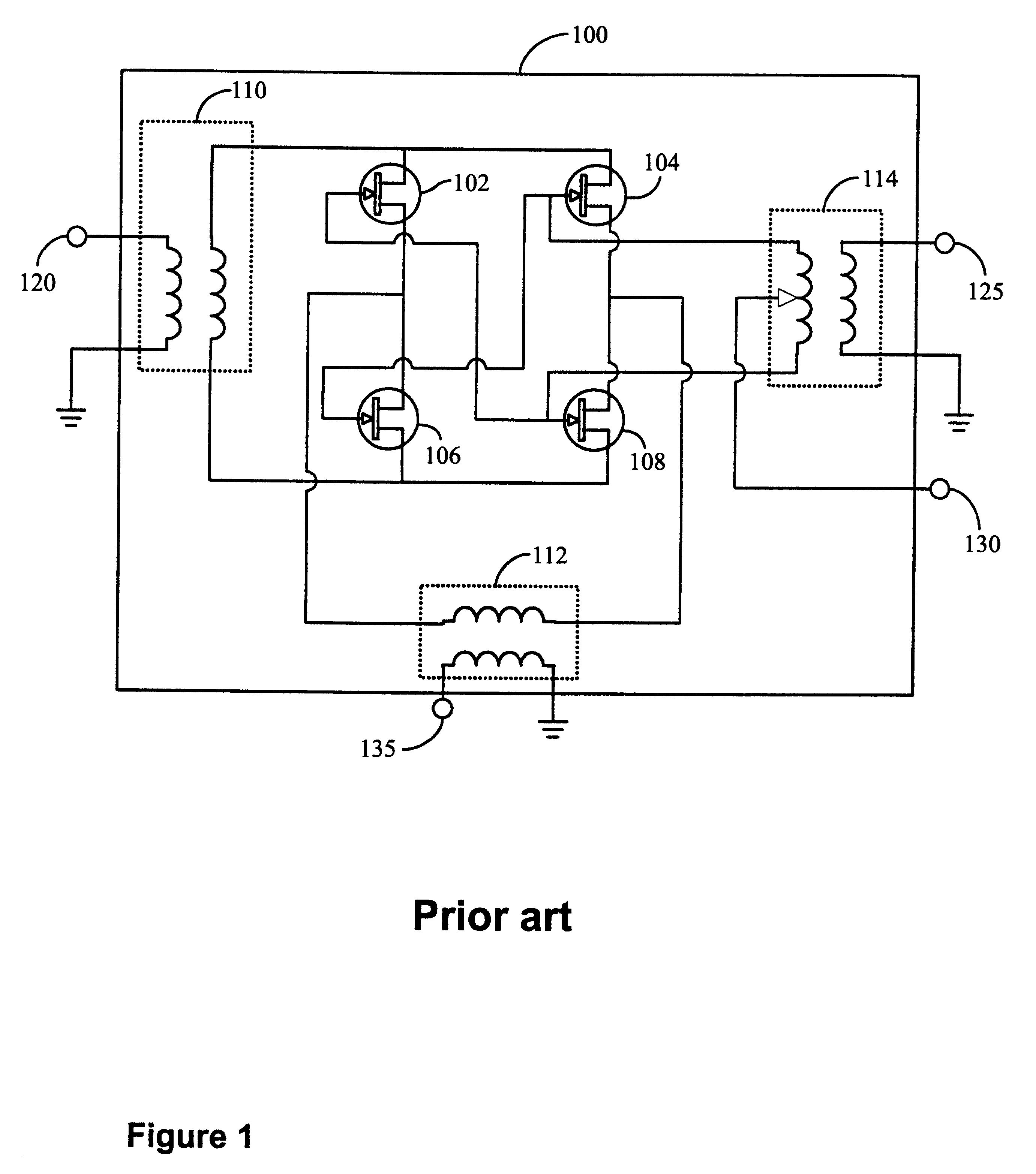Frequency converter with improved linearity
a linearity and frequency converter technology, applied in the direction of demodulation, oscillation generators, electrical apparatus, etc., can solve problems such as inability to filter interference, and achieve the effect of improving linearity
- Summary
- Abstract
- Description
- Claims
- Application Information
AI Technical Summary
Benefits of technology
Problems solved by technology
Method used
Image
Examples
Embodiment Construction
The main purpose of a MESFET mixer is to convert a signal from an RF signal to a lower frequency signal as efficiently as possible. That is, the sinusoidal input has to be reproduced at the output as accurately as possible but at a frequency that can be processed by other electronic components.
FIG. 1 shows a circuit diagram of a typical prior art double-balanced MESFET mixer 100. Three inputs are required in mixer 100. The first input 120 is the RF signal (of sinusoidal form) as received from the air medium. The second input 125 is a signal provided by a Local Oscillator (LO) of the communications receiver (not shown). The LO signal may be a clipped sine wave or a square wave. The third input 130 is a DC bias that is applied to the gates of the four MESFETs (102, 104, 106 and 108). In a specific embodiment of the prior art mixer, the gate bias voltage is -1.4V.
The output 135 is an intermediate frequency signal (lower than RF) that can be demodulated by other electronic components in...
PUM
 Login to View More
Login to View More Abstract
Description
Claims
Application Information
 Login to View More
Login to View More - R&D
- Intellectual Property
- Life Sciences
- Materials
- Tech Scout
- Unparalleled Data Quality
- Higher Quality Content
- 60% Fewer Hallucinations
Browse by: Latest US Patents, China's latest patents, Technical Efficacy Thesaurus, Application Domain, Technology Topic, Popular Technical Reports.
© 2025 PatSnap. All rights reserved.Legal|Privacy policy|Modern Slavery Act Transparency Statement|Sitemap|About US| Contact US: help@patsnap.com



